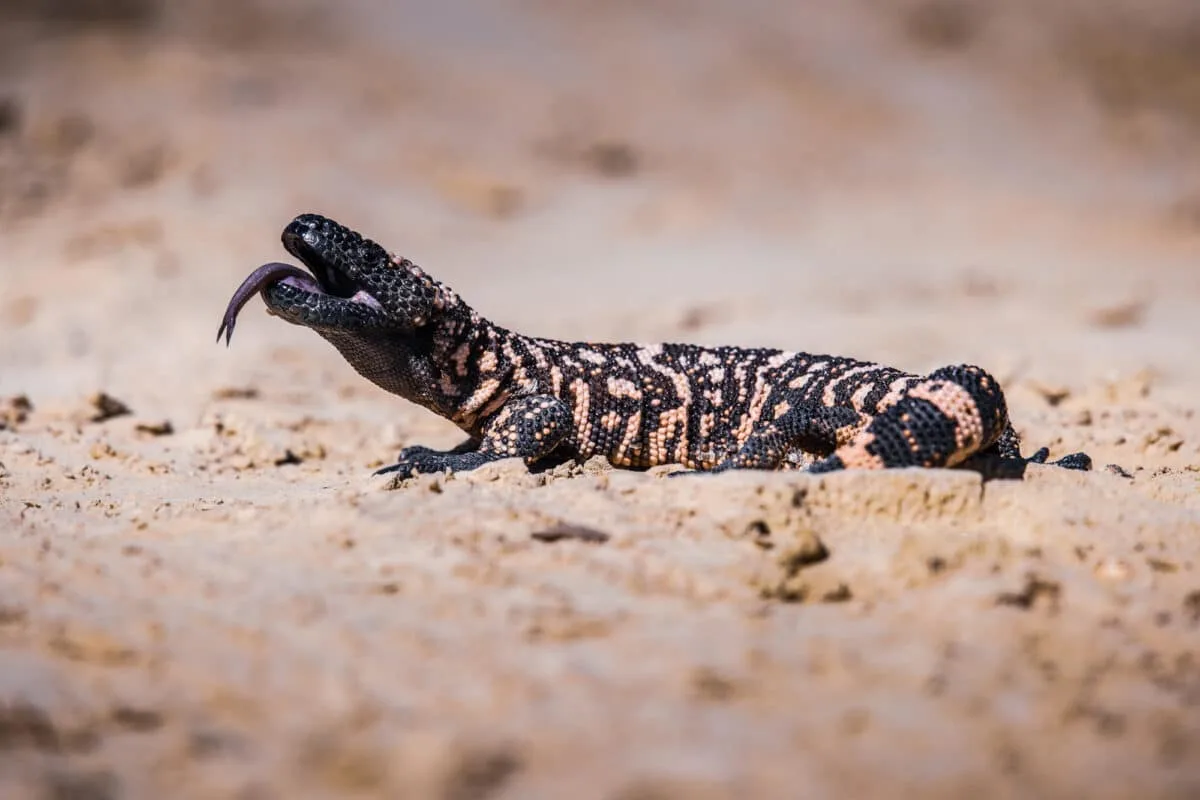Are you afraid of snakes? And what about lizards? Well, when you encounter a Gila monster, there’s a lot more to worry about than just the terrifying crawl factor.
As one of only two venomous lizards in the world, Gila monsters are nothing to mess around with. A bite from this lizard can be extremely painful and even cause a life-threatening infection.
In this article, we explore what to do if you become an unsuspecting victim of a Gila monster bite.
Read on to learn more about these exotic species, what their venom can be to humans, and how to treat Gila monster bites.
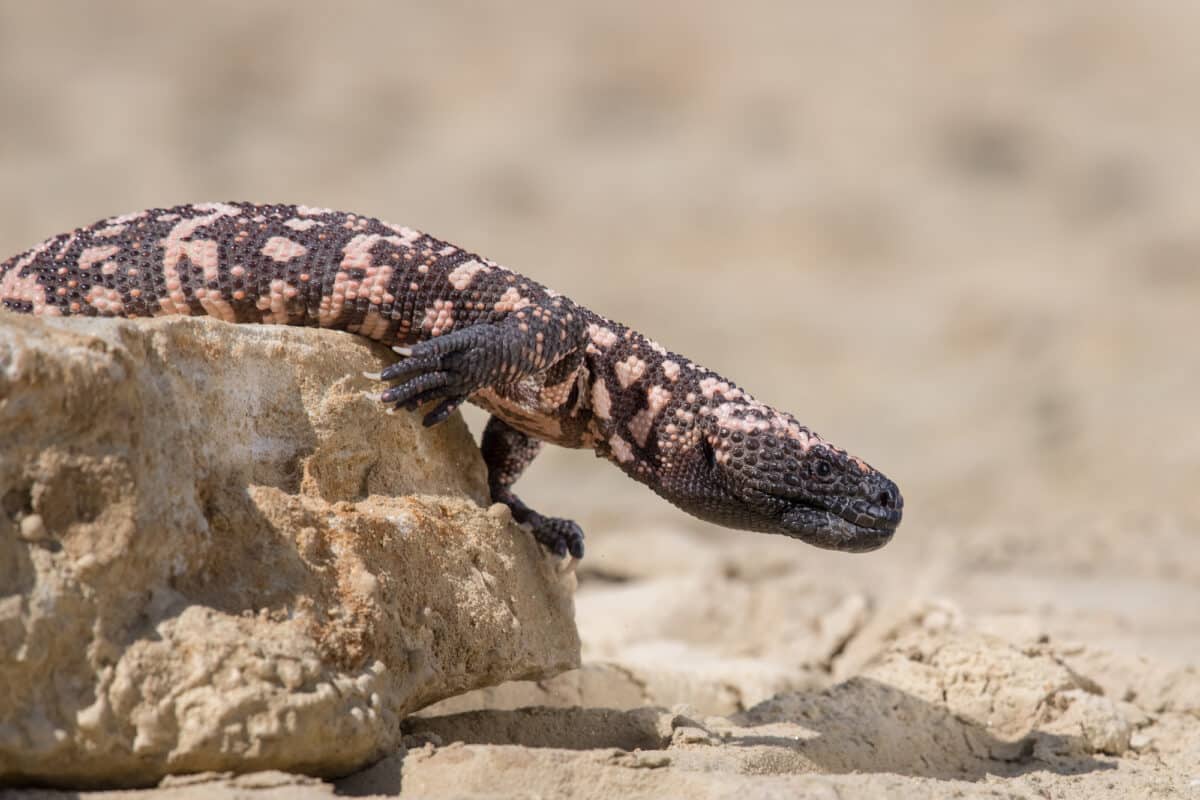
Skip ahead to any section below!
Gila Monster:
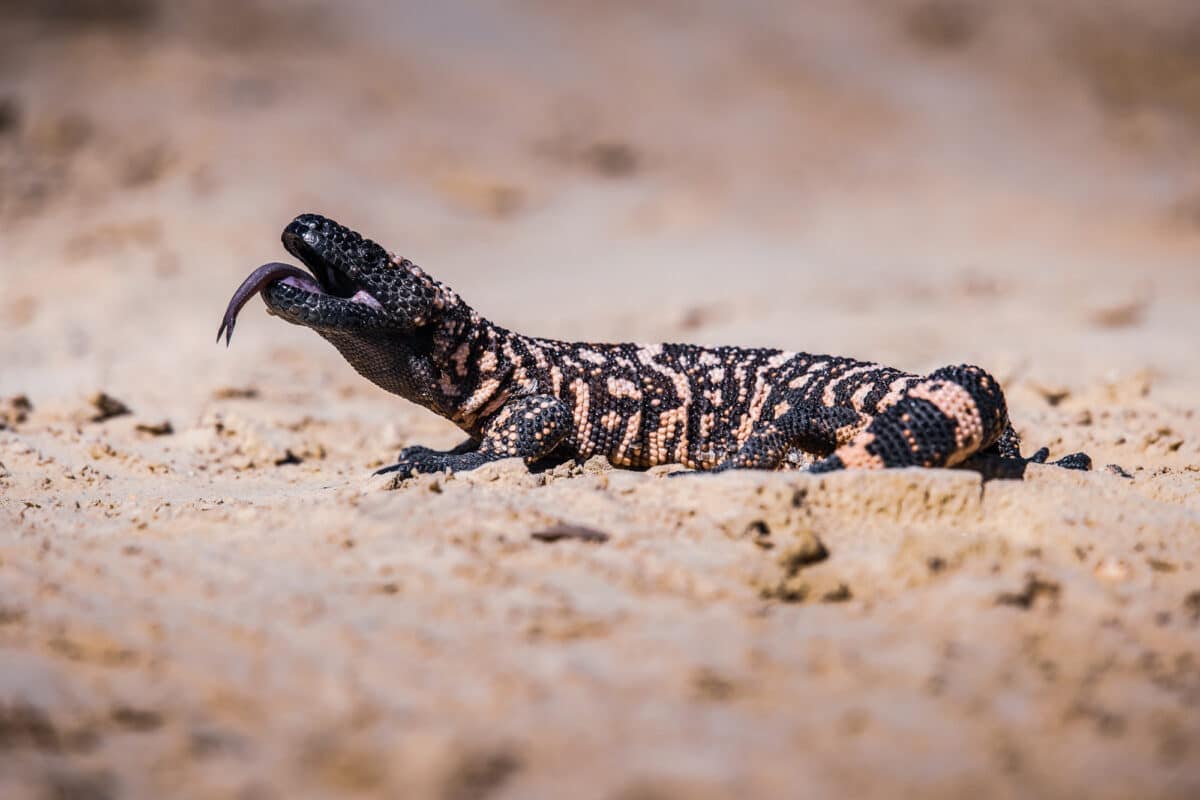
Behavior
Gila monsters are some of the most iconic desert-dwellers that you can find in the southwestern United States.
They’re often seen scurrying around on rocky terrain near water sources, where they feed on small invertebrates like insects and lizards.
Although they look intimidating with their dark pink stripes, these reptiles are actually very shy in nature
When threatened, they are known to inflict a painful but not dangerous bite due to their venomous saliva.
They spend much of their time in burrows or under cracks in rocks during the hot summer days. These animals play an important role in maintaining population balance by preying upon smaller rodents.
Check out: Coastal Taipan Bite.
Anatomy
Despite having been around for millions of years, knowledge about these mysterious lizards is still relatively scarce and their population numbers have been on a steady decline in recent years.
Conservation efforts are being made to protect the species’ habitat and ensure that gila monsters remain part of our ecosystem for generations to come.
They can live up to 25 years in captivity, making them an interesting pet choice for reptile enthusiasts.
If you decide to keep one as a pet, it is important to remember that gila monsters require appropriate housing conditions and need access to enough food and water sources at all times.In other words, these reptiles require proper care just like any other animal.
In most cases, if you leave them alone they will do the same for you, so it is always important to keep a safe distance and never handle wild Gila monsters without proper training or supervision.
By understanding their lifestyle and natural habitat we can help conserve these incredible creatures and protect them from any harm that could be caused by human interference. Conservation efforts like this are essential in order to preserve the species’ future generations
They may have a fearsome bite, but they deserve our admiration – not our fear.
Symptoms of a Gila Monster Bite
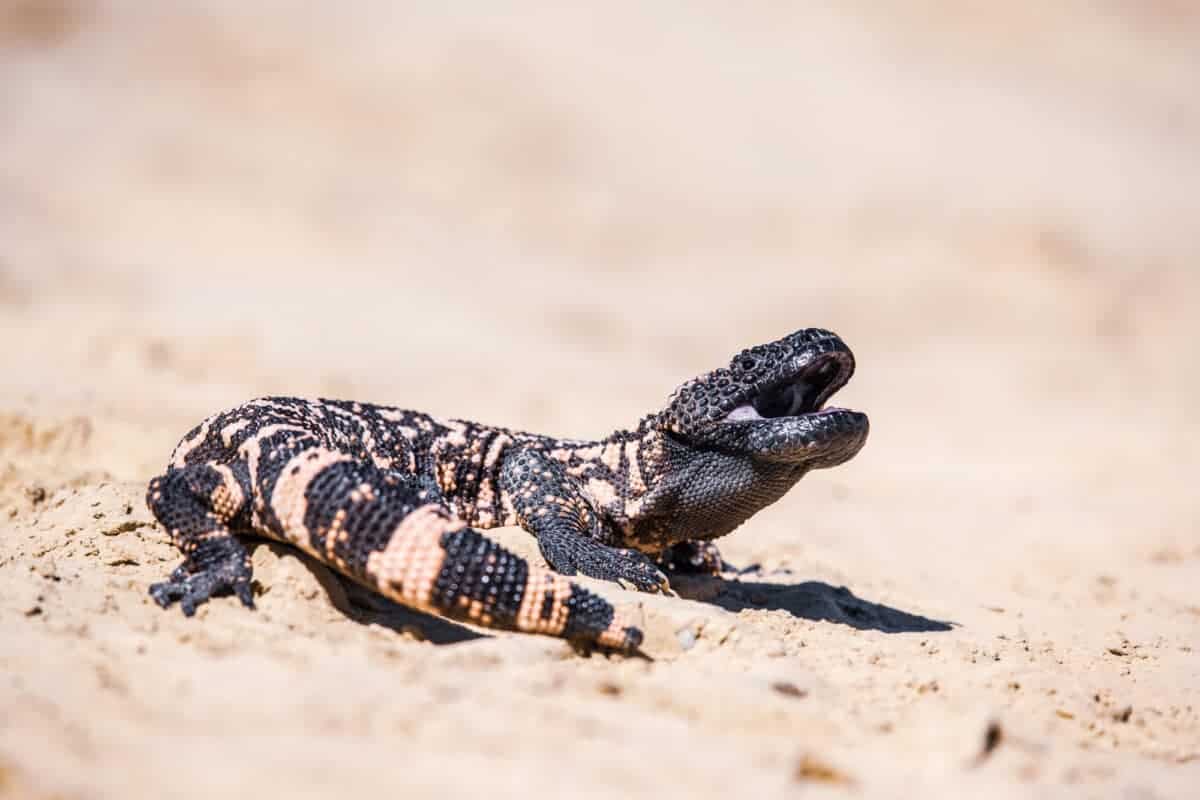
The Gila monster is a venomous creature that can cause serious damage if its bite is not tended to properly.
Its victims may experience sudden and intense pain, nausea, difficulty breathing, and profuse sweating shortly after being bitten. While it’s rare for the bite to be fatal, it can cause serious health problems if left untreated.
If you suspect you or someone around you has been bitten by a Gila monster, seek medical attention immediately. Your health and safety are not worth the risk.
Be sure to describe the type of creature that bit you in as much detail as possible, as this can help the doctor diagnose and treat your symptoms more effectively.
Let’s take a look at some of the symptoms associated with a Gila monster bite:
– Severe pain at the site of the bite, which may last up to several hours.
– Swelling and redness surrounding the bite wound.
– Blisters or ulcers that develop near the bite site.
– A tingling sensation around your mouth, face, hands, and feet.
– Nausea, vomiting, weakness, and/or dizziness.
– Difficulty breathing or speaking due to swelling in your throat or tongue.
– An increase in blood pressure can lead to severe headaches and confusion.
So, when exploring the great outdoors, take extra precautions and wear protective clothing! With proper safety measures in place, you can enjoy all that nature has to offer – without the added worry of a Gila monster bite.
What to Do if You Are Bitten
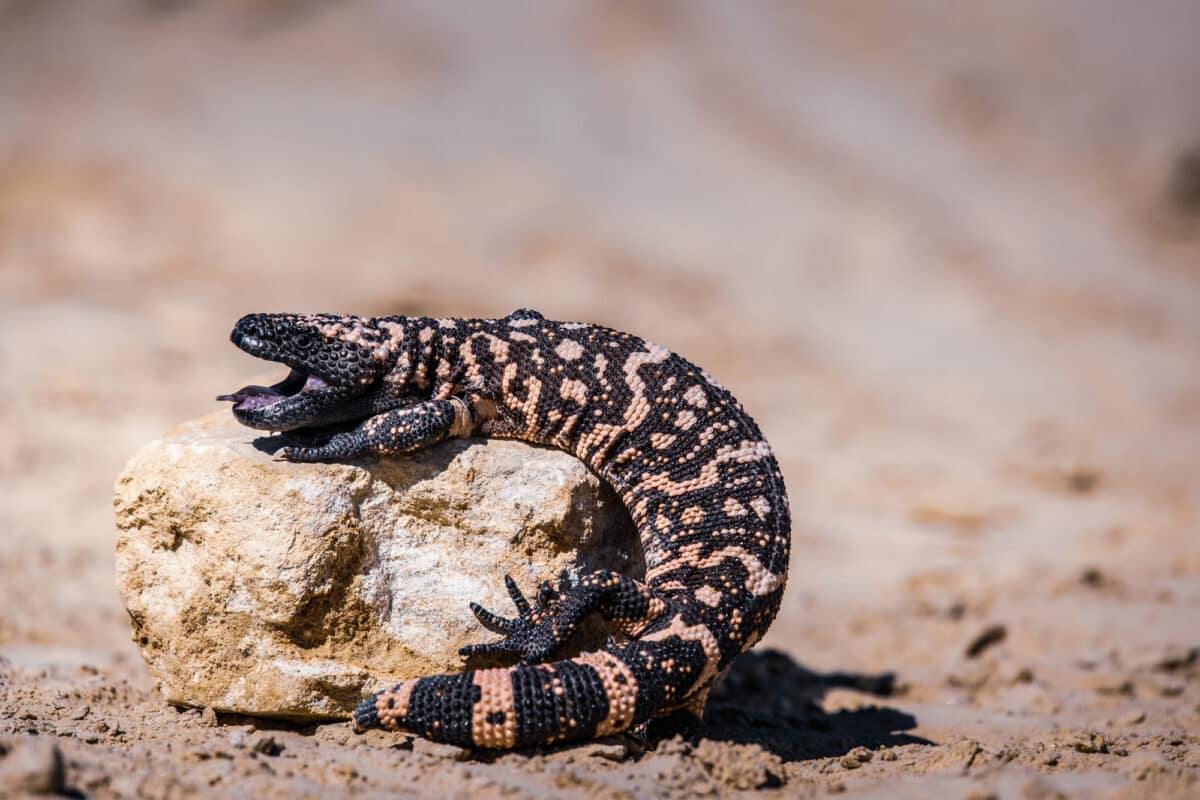
There are certain steps you can take to help avoid an unfortunate run-in with a Gila monster in the first place.
- Wear appropriate protective gear such as thick boots and long pants when you’re out in nature and take extra care to watch where you step.
2. If, however, a Gila monster does bite you, be sure to seek medical attention immediately. Clean the wound and apply an antiseptic or antibiotic ointment and cover with a bandage.
3. It is also recommended that in addition to seeking professional medical help, you might consider consulting a local expert or naturalist who can offer more insight into the potential risks of Gila monster bites.
4. With proper care and an understanding of these creatures, you can rest assured that your hike will be as safe and enjoyable as possible.
Check out: RattleSnake VS Cape Cobra.
How to Avoid Gila Monster Bite
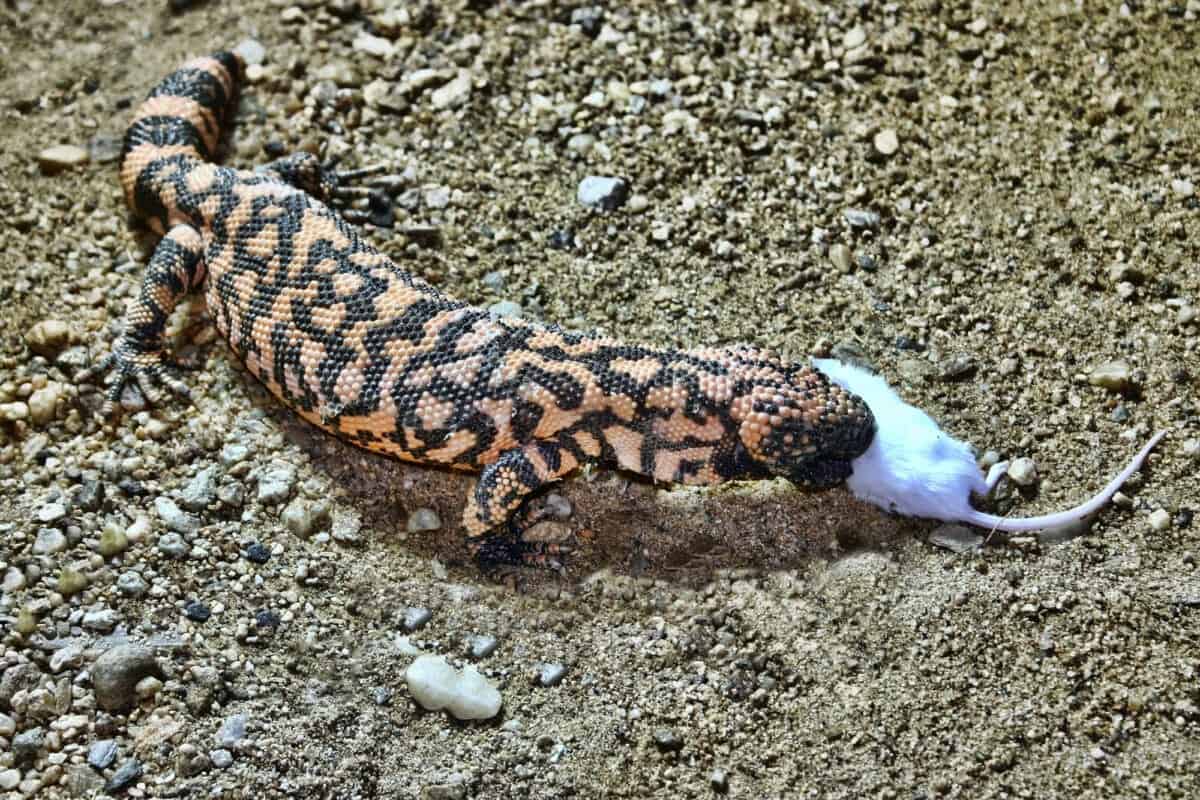
First things first: stay away from their natural habitats. Gila monsters live in dry and rocky terrain, so make sure you know your surroundings before venturing off into unknown territory.
If you venture out into the desert, take caution: Gila monsters are formidable reptiles that can deliver a nasty bite.
To avoid getting too close to one of these scaly creatures, keep your eyes peeled for their telltale signs
Look for the orange and black bands along their back and if there’s a sure sign you should give them plenty of space.
If you find yourself too close, don’t panic, just back away slowly.
Because Gila monsters are more scared of you than you are of them.
Finally, when walking around in areas where they may be present, always be mindful of your steps and wear appropriate footwear for example (sturdy hiking boots).
With these tips in mind, you can explore the desert with confidence knowing that avoiding a Gila monster bite is within your control.
Check out: Rattlesnake vs. Mole Snake.
Wrap Up
That being said, if you do get bitten by one of these creatures, seek medical attention immediately.
The venom can be quite dangerous and symptoms may vary from person to person. So, It’s always better to be safe than sorry when dealing with such beasts – so make sure you take our tips above so that you don’t end up regretting it later.
Stay safe and enjoy your time in nature!
If you enjoyed this article as much as me, check out our related article links below!
Next up:
- Unveiling The Longest Snake In the World
- Unearth the Reality of Florida’s Venomous Spiders
- Great White Shark Vs. Bull Shark
- Michael Phelps Vs. Dolphin: A Race For Aquatic Supremacy
- Eagle’s Aerial Acrobatics: The Hawk Becomes The Hunted
- Discover Texas’s Most Dangerous Animals
Join our Forum for free today!

- Why Do Zebras Have Stripes - July 23, 2024
- Huge Pet Bison Breaks Into House - July 22, 2024
- Giant Black Bear Surprises Beachgoers by Emerging from the Ocean in Florida - July 22, 2024

